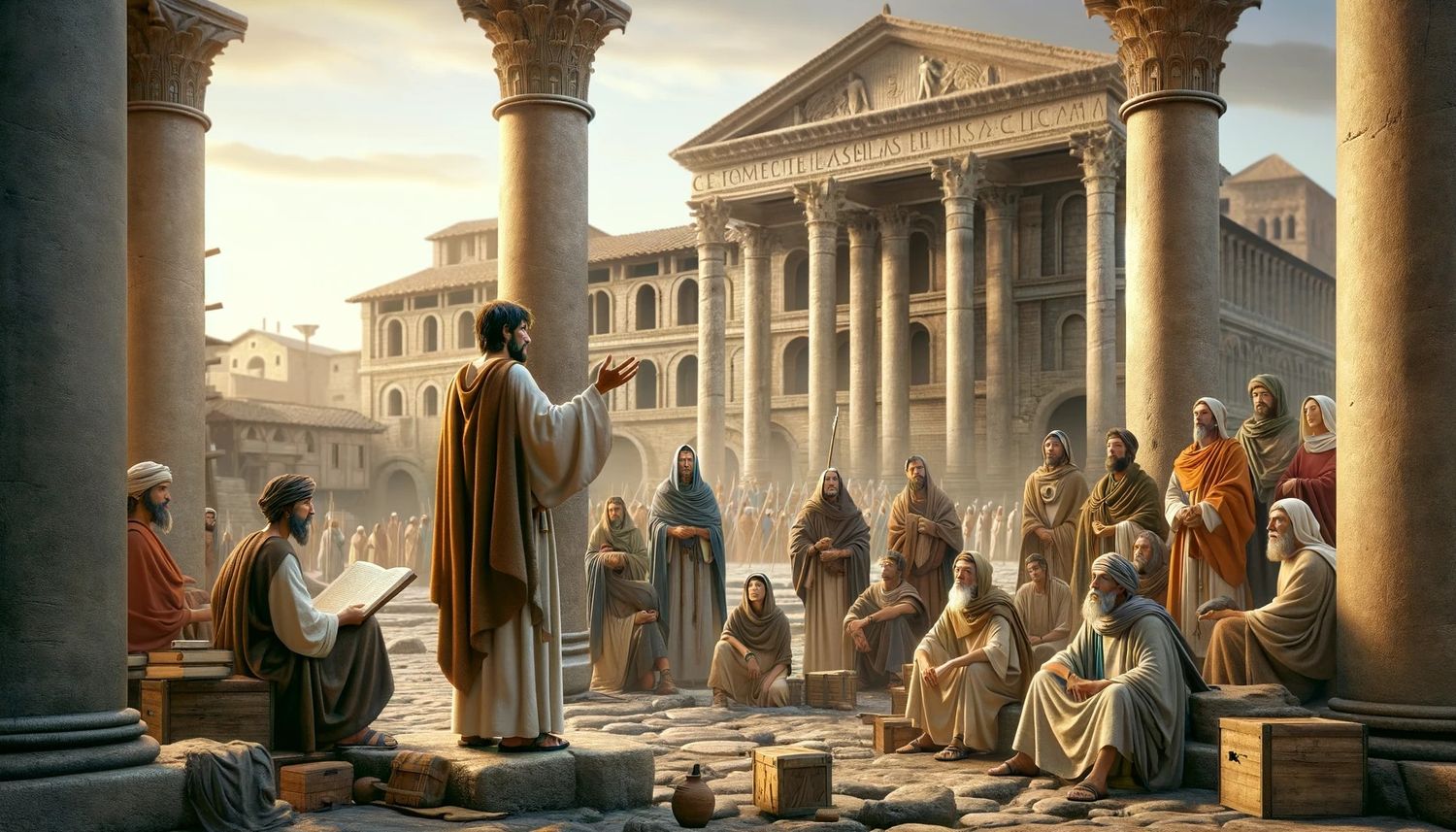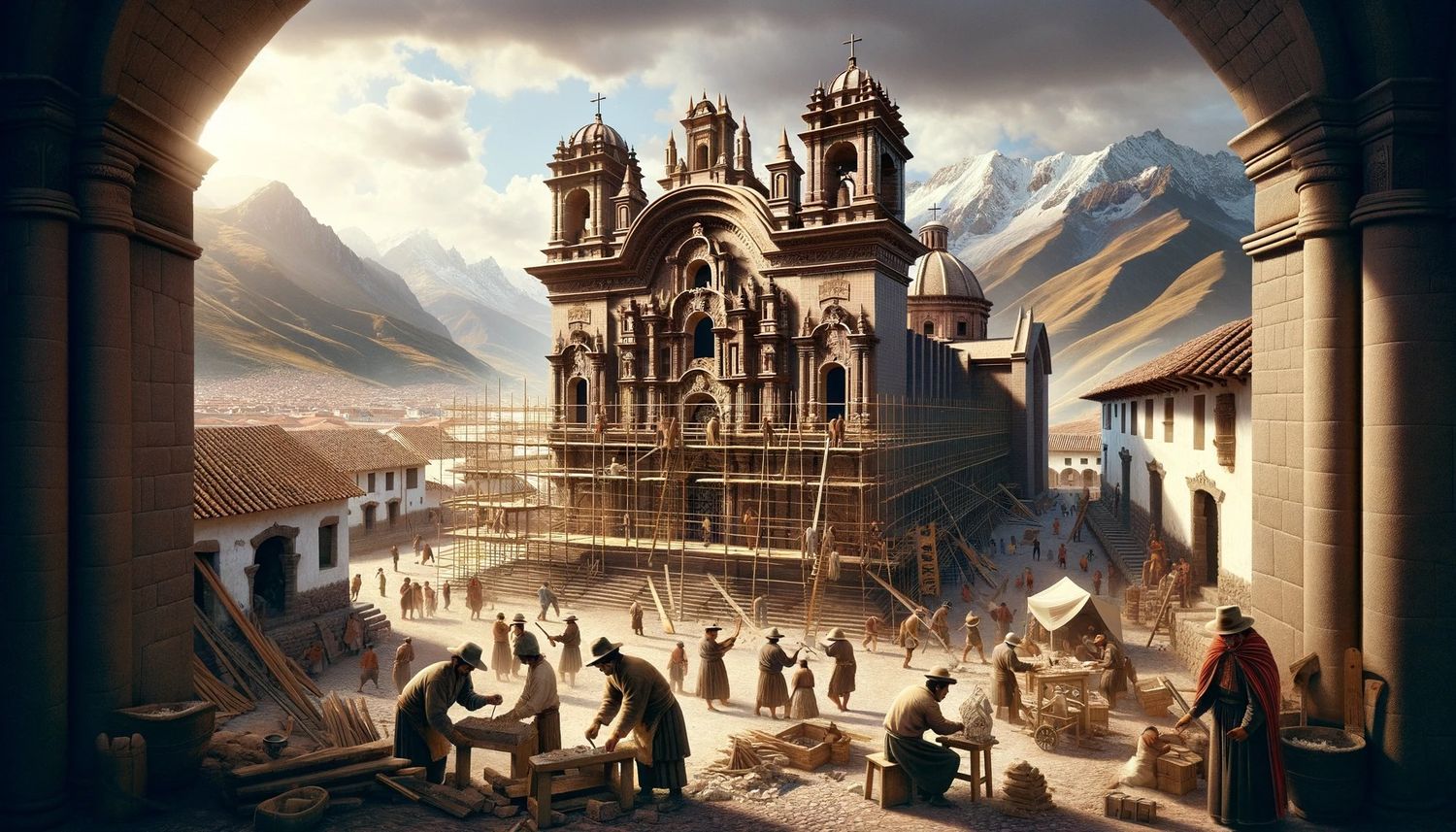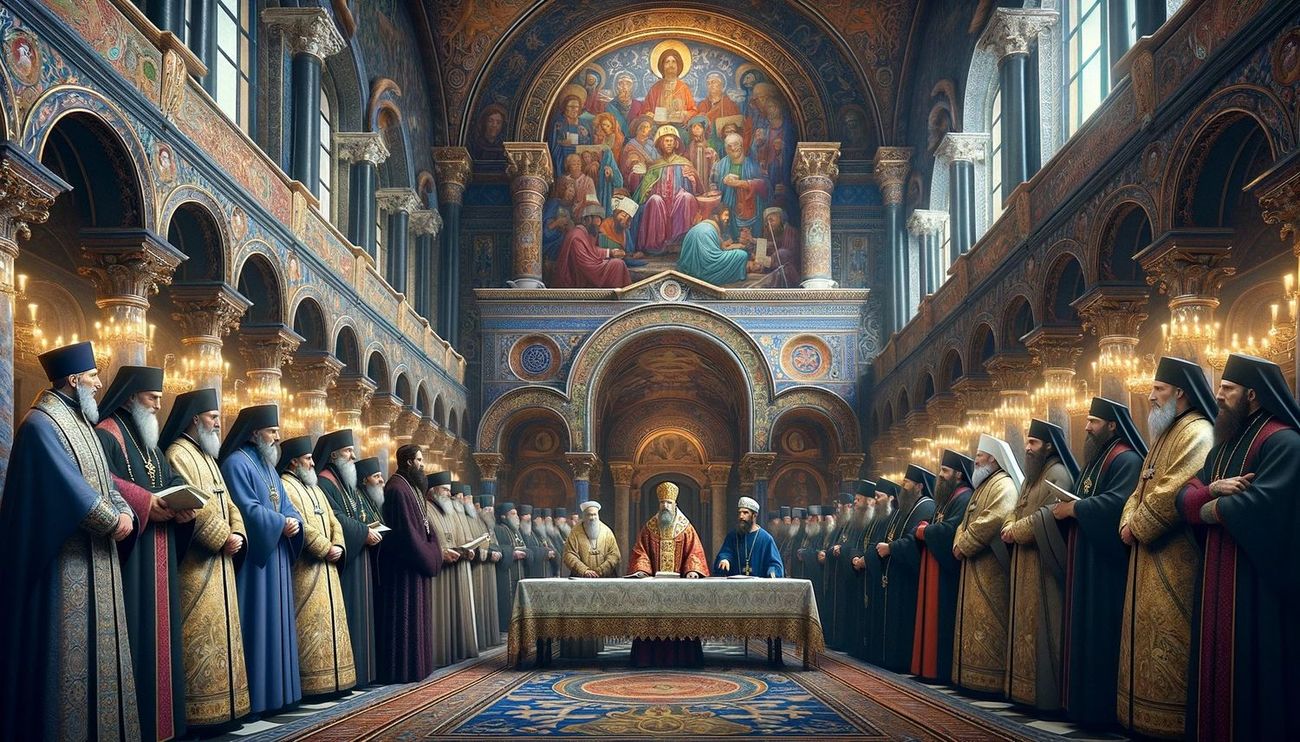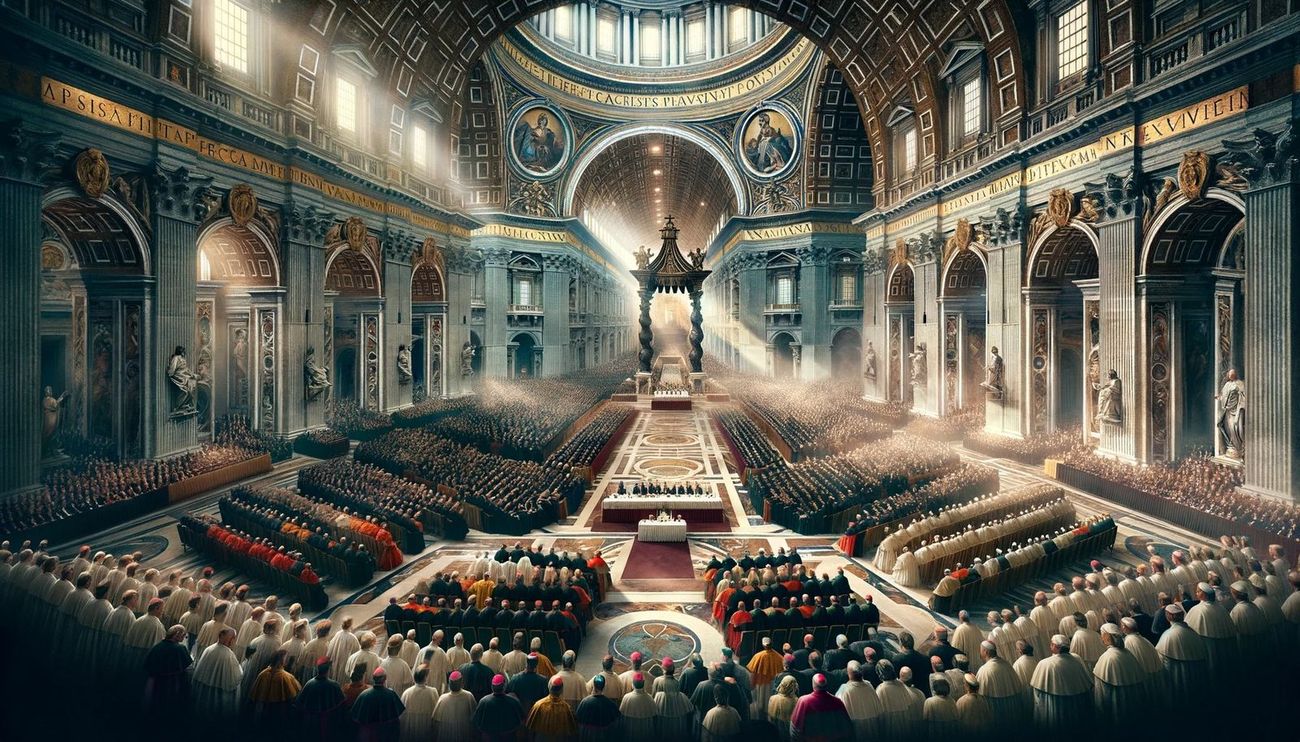Home>Theology and Spirituality>When Was Catholicism Introduced To Ireland


Theology and Spirituality
When Was Catholicism Introduced To Ireland
Published: February 18, 2024
Peter Smith, Editorial Director at Christian.net, combines deep insights into faith, politics, and culture to lead content creation that resonates widely. Awarded for his contributions to religious discourse, he previously headed a major organization for religious communicators, enhancing dialogue on faith's societal impacts.
Discover the history of Catholicism in Ireland and its introduction to the country. Explore the theology and spirituality behind the establishment of the faith.
(Many of the links in this article redirect to a specific reviewed product. Your purchase of these products through affiliate links helps to generate commission for Christian.net, at no extra cost. Learn more)
Table of Contents
Introduction
The introduction of Catholicism to Ireland is a fascinating journey that intertwines spirituality, history, and cultural transformation. It is a story that spans centuries, shaped by the influence of early Christian missionaries, the arrival of St. Patrick, and the establishment of monasteries and churches. This pivotal moment in Irish history marked the beginning of a profound spiritual and religious legacy that continues to resonate through the ages.
The arrival of Catholicism in Ireland not only transformed the religious landscape but also left an indelible mark on the country's cultural and social fabric. Understanding the origins and evolution of Catholicism in Ireland provides valuable insights into the interconnectedness of faith, tradition, and identity.
As we delve into the historical narrative of Catholicism in Ireland, we will uncover the profound impact of this spiritual movement on the Irish people and explore the enduring legacy of faith that continues to shape the nation's ethos. The journey begins with the early Christian influences that laid the groundwork for the arrival of St. Patrick, a figure whose legacy is synonymous with the spread of Catholicism in Ireland.
Early Christian Influences in Ireland
The early Christian influences in Ireland trace back to the 5th century, a period marked by the gradual spread of Christianity across the island. It was during this time that Irish society underwent a profound transformation, as the teachings of Christianity began to take root and flourish.
The initial seeds of Christianity in Ireland were sown by early missionaries and monks who ventured to the island, carrying with them the message of the Gospel. These devoted individuals, often hailing from distant lands, embarked on arduous journeys to bring the light of Christianity to the Irish people. Their unwavering commitment and fervent belief in spreading the teachings of Jesus Christ laid the foundation for the Christian faith to take hold in Ireland.
One of the most notable figures in this early Christian movement was St. Palladius, who is believed to have been sent by Pope Celestine I to Ireland in 431 AD. While his mission may not have resulted in widespread conversion, it marked the beginning of a significant spiritual presence on the island.
Another influential figure in the early Christianization of Ireland was St. Declan, who is revered as one of the earliest Irish saints. His missionary efforts in the region of Munster contributed to the gradual acceptance of Christianity among the local population.
The arrival of these pioneering missionaries and the establishment of Christian communities laid the groundwork for the subsequent spread of Catholicism in Ireland. Their efforts set in motion a transformative process that would shape the religious and cultural landscape of the island for centuries to come.
As the influence of Christianity continued to grow, it intertwined with existing Irish traditions and belief systems, creating a unique fusion of spiritual practices. This syncretism played a pivotal role in the gradual assimilation of Christian teachings into the fabric of Irish society, paving the way for the emergence of a distinctively Irish form of Christianity.
The early Christian influences in Ireland set the stage for the momentous arrival of St. Patrick, whose impact would propel the spread of Catholicism and leave an indelible mark on the island's history and identity.
Arrival of St. Patrick
The arrival of St. Patrick in Ireland heralded a transformative era in the island's history, marking a pivotal moment in the spread of Catholicism. Born in Roman Britain, St. Patrick was captured by Irish raiders at a young age and taken to Ireland as a slave. During his captivity, he found solace in his faith and developed a deep spiritual connection with Christianity. After six years, he managed to escape and return to his homeland, where he underwent religious training and eventually became a bishop.
Driven by a profound sense of purpose, St. Patrick felt a calling to return to Ireland as a missionary, guided by his unwavering faith and a fervent desire to spread the teachings of Christianity. In 432 AD, he embarked on his monumental mission to Ireland, carrying with him the message of the Gospel and a steadfast determination to illuminate the hearts and minds of the Irish people.
St. Patrick's approach to evangelization was characterized by a deep respect for the existing Irish traditions and customs. He ingeniously incorporated elements of Celtic spirituality into his teachings, effectively bridging the gap between the native belief systems and the tenets of Christianity. Through his compelling sermons and the establishment of churches and monasteries, St. Patrick endeavored to create a harmonious synthesis of faith that resonated with the spiritual inclinations of the Irish populace.
One of the most enduring symbols associated with St. Patrick is the use of the shamrock to explain the concept of the Holy Trinity, a powerful metaphor that encapsulated the essence of Christian doctrine in a manner that deeply resonated with the Irish people. This innovative approach to evangelization, coupled with St. Patrick's unwavering dedication, contributed to the widespread acceptance of Christianity across the island.
St. Patrick's legacy extends far beyond his role as a missionary. His influence permeated every facet of Irish society, leaving an indelible imprint on the country's cultural, artistic, and spiritual heritage. The annual celebration of St. Patrick's Day, originally a religious feast day commemorating his death, has evolved into a global celebration of Irish culture and identity, symbolizing the enduring impact of St. Patrick's mission and the profound legacy of Catholicism in Ireland.
St. Patrick's arrival in Ireland marked a watershed moment in the island's history, igniting a spiritual awakening that reverberated through the ages. His unwavering commitment to spreading the message of Christianity laid the groundwork for the enduring presence of Catholicism in Ireland, shaping the nation's identity and ethos in profound ways.
Establishment of Monasteries and Churches
Following the pioneering efforts of St. Patrick and the early Christian missionaries, the establishment of monasteries and churches played a pivotal role in solidifying the presence of Catholicism in Ireland. These sacred institutions served as beacons of faith, centers of learning, and bastions of spiritual devotion, shaping the religious landscape and societal fabric of the island.
The establishment of monasteries represented a profound commitment to the spiritual and intellectual advancement of Irish society. These monastic communities, characterized by their ascetic lifestyle and fervent dedication to prayer and scholarship, became vital hubs of religious activity and centers of cultural preservation. Monasteries such as Clonmacnoise, Glendalough, and Iona emerged as influential seats of learning, where monks diligently transcribed manuscripts, preserved ancient texts, and advanced knowledge in diverse fields, including theology, philosophy, and the arts.
The monastic tradition in Ireland fostered a rich tapestry of artistic expression, exemplified by the intricate illuminated manuscripts such as the Book of Kells and the Ardagh Chalice, which stand as enduring testaments to the creativity and devotion of the monks. These exquisite works of art not only adorned the sacred texts but also served as tangible expressions of the profound spiritual devotion and artistic ingenuity that flourished within the monastic communities.
In addition to the monasteries, the establishment of churches across the Irish landscape further solidified the presence of Catholicism, providing local communities with spiritual guidance, communal gathering spaces, and a tangible connection to the divine. These churches, often constructed with remarkable craftsmanship and adorned with intricate carvings and decorative elements, stood as physical manifestations of the enduring faith and unwavering devotion of the Irish people.
The symbiotic relationship between the monasteries and churches created a spiritual ecosystem that permeated every aspect of Irish life, fostering a deep sense of religious identity and communal solidarity. The monastic and ecclesiastical foundations became integral pillars of Irish society, exerting a profound influence on the cultural, educational, and spiritual realms.
The establishment of monasteries and churches not only facilitated the spread of Catholicism but also contributed to the preservation of knowledge, the flourishing of artistic expression, and the cultivation of a vibrant spiritual heritage that continues to resonate through the annals of Irish history. These sacred institutions stand as enduring symbols of the enduring legacy of Catholicism in Ireland, embodying the timeless spirit of faith, scholarship, and cultural enrichment that continues to inspire generations.
Synod of Whitby and Roman Catholic Influence
The Synod of Whitby, convened in 664 AD, stands as a pivotal event that profoundly influenced the trajectory of Catholicism in Ireland. This historic synod, held at the monastery of Streonshalh (now known as Whitby) in Northumbria, England, was convened to address the ecclesiastical differences between the Celtic Christian traditions prevalent in Ireland and the Roman Christian practices advocated by the Roman Catholic Church.
At the heart of the Synod of Whitby lay a fundamental divergence in the calculation of the date for Easter, a discrepancy that underscored the broader theological and liturgical disparities between the Celtic and Roman Christian traditions. The Celtic Church, which had flourished in Ireland and parts of Scotland, adhered to a distinct method of calculating the date of Easter, rooted in ancient Celtic traditions and practices. In contrast, the Roman Church, following the directives of the Council of Nicaea, utilized a different method for determining the date of Easter, aligning with the practices of the broader Christian world.
The Synod of Whitby served as a forum for the resolution of these differences, with King Oswiu of Northumbria presiding over the deliberations. The synod witnessed the impassioned advocacy of both the Celtic and Roman Christian proponents, each presenting compelling arguments rooted in tradition, scripture, and theological reasoning. Ultimately, the synod resolved in favor of the Roman Christian practices, marking a significant shift in the ecclesiastical landscape of Ireland and the broader Celtic regions.
The decision of the Synod of Whitby to adopt Roman Christian practices exerted a profound influence on the trajectory of Catholicism in Ireland. The alignment with Roman Christian traditions facilitated closer ties with the broader Christian world, strengthening the bonds between the Irish Church and the ecclesiastical authority of Rome. This alignment not only harmonized the liturgical practices within the Irish Church but also enhanced its integration into the broader framework of Roman Catholicism.
The Synod of Whitby, while emblematic of the convergence towards Roman Christian practices, also underscored the enduring resilience and distinctiveness of the Celtic Christian traditions. The synod's decision reflected a nuanced interplay between unity and diversity, as the Irish Church navigated its integration into the Roman Catholic fold while retaining elements of its rich indigenous spiritual heritage.
The impact of the Synod of Whitby reverberated across the Irish ecclesiastical landscape, shaping the course of Catholicism in Ireland and contributing to the broader narrative of Christian unity and diversity. The synod's legacy endures as a testament to the dynamic interplay of tradition, adaptation, and unity within the tapestry of Catholicism, underscoring the enduring influence of this historic event on the spiritual and cultural evolution of Ireland.
This pivotal moment in Irish history marked the beginning of a profound spiritual and religious legacy that continues to resonate through the ages.
Read more: When Was Catholicism Founded?
Spread of Catholicism in Ireland
The spread of Catholicism in Ireland represents a transformative journey that unfolded over centuries, shaping the spiritual, cultural, and societal landscape of the island. Following the foundational efforts of early Christian missionaries and the monumental impact of St. Patrick, Catholicism took root and flourished, permeating every facet of Irish life and leaving an indelible imprint on the nation's identity.
The propagation of Catholicism in Ireland was propelled by a multifaceted tapestry of factors, including the unwavering dedication of missionaries, the establishment of monastic communities, and the integration of Christian teachings into the fabric of Irish traditions. The enduring legacy of St. Patrick's mission reverberated across the island, inspiring a profound spiritual awakening and fostering a deep sense of religious identity among the Irish populace.
The establishment of monasteries and churches served as vital conduits for the dissemination of Catholic teachings, providing sanctuaries of faith, centers of learning, and beacons of spiritual guidance. These sacred institutions not only facilitated the spread of Catholicism but also nurtured a rich tapestry of artistic expression, intellectual inquiry, and communal solidarity, shaping the cultural and educational landscape of Ireland.
The enduring influence of Catholicism in Ireland is exemplified by the enduring presence of sacred sites, pilgrimage routes, and religious traditions that continue to resonate with spiritual significance. The veneration of saints, the observance of religious feast days, and the preservation of ancient religious customs stand as enduring testaments to the enduring legacy of Catholicism in Ireland, underscoring the profound impact of the faith on the nation's ethos and collective memory.
The spread of Catholicism in Ireland represents a testament to the enduring resilience and adaptability of the faith, as it navigated the ebb and flow of history while retaining its profound spiritual significance. The enduring legacy of Catholicism in Ireland stands as a testament to the enduring resilience and adaptability of the faith, as it navigated the ebb and flow of history while retaining its profound spiritual significance. The enduring legacy of Catholicism in Ireland stands as a testament to the enduring resilience and adaptability of the faith, as it navigated the ebb and flow of history while retaining its profound spiritual significance.
Conclusion
In conclusion, the introduction of Catholicism to Ireland represents a profound and transformative journey that has left an indelible mark on the nation's history, culture, and spiritual identity. From the early Christian influences that laid the groundwork for the arrival of St. Patrick to the establishment of monasteries, the Synod of Whitby, and the enduring spread of Catholicism across the island, the narrative of Catholicism in Ireland is a testament to the enduring resilience and adaptability of the faith.
The arrival of St. Patrick, with his unwavering commitment to spreading the message of Christianity, ignited a spiritual awakening that reverberated through the ages, shaping the religious landscape and societal fabric of Ireland. His innovative approach to evangelization, coupled with his deep respect for Irish traditions, facilitated the widespread acceptance of Christianity and laid the foundation for the enduring presence of Catholicism in Ireland.
The establishment of monasteries and churches served as vital conduits for the dissemination of Catholic teachings, fostering a rich tapestry of artistic expression, intellectual inquiry, and communal solidarity. The Synod of Whitby, while emblematic of the convergence towards Roman Christian practices, underscored the enduring resilience and distinctiveness of the Celtic Christian traditions, reflecting a nuanced interplay between unity and diversity within the tapestry of Catholicism.
The enduring legacy of Catholicism in Ireland is exemplified by the enduring presence of sacred sites, pilgrimage routes, and religious traditions that continue to resonate with spiritual significance. The veneration of saints, the observance of religious feast days, and the preservation of ancient religious customs stand as enduring testaments to the enduring legacy of Catholicism in Ireland, underscoring the profound impact of the faith on the nation's ethos and collective memory.
The spread of Catholicism in Ireland represents a testament to the enduring resilience and adaptability of the faith, as it navigated the ebb and flow of history while retaining its profound spiritual significance. The enduring legacy of Catholicism in Ireland stands as a testament to the enduring resilience and adaptability of the faith, as it navigated the ebb and flow of history while retaining its profound spiritual significance. The enduring legacy of Catholicism in Ireland stands as a testament to the enduring resilience and adaptability of the faith, as it navigated the ebb and flow of history while retaining its profound spiritual significance.














